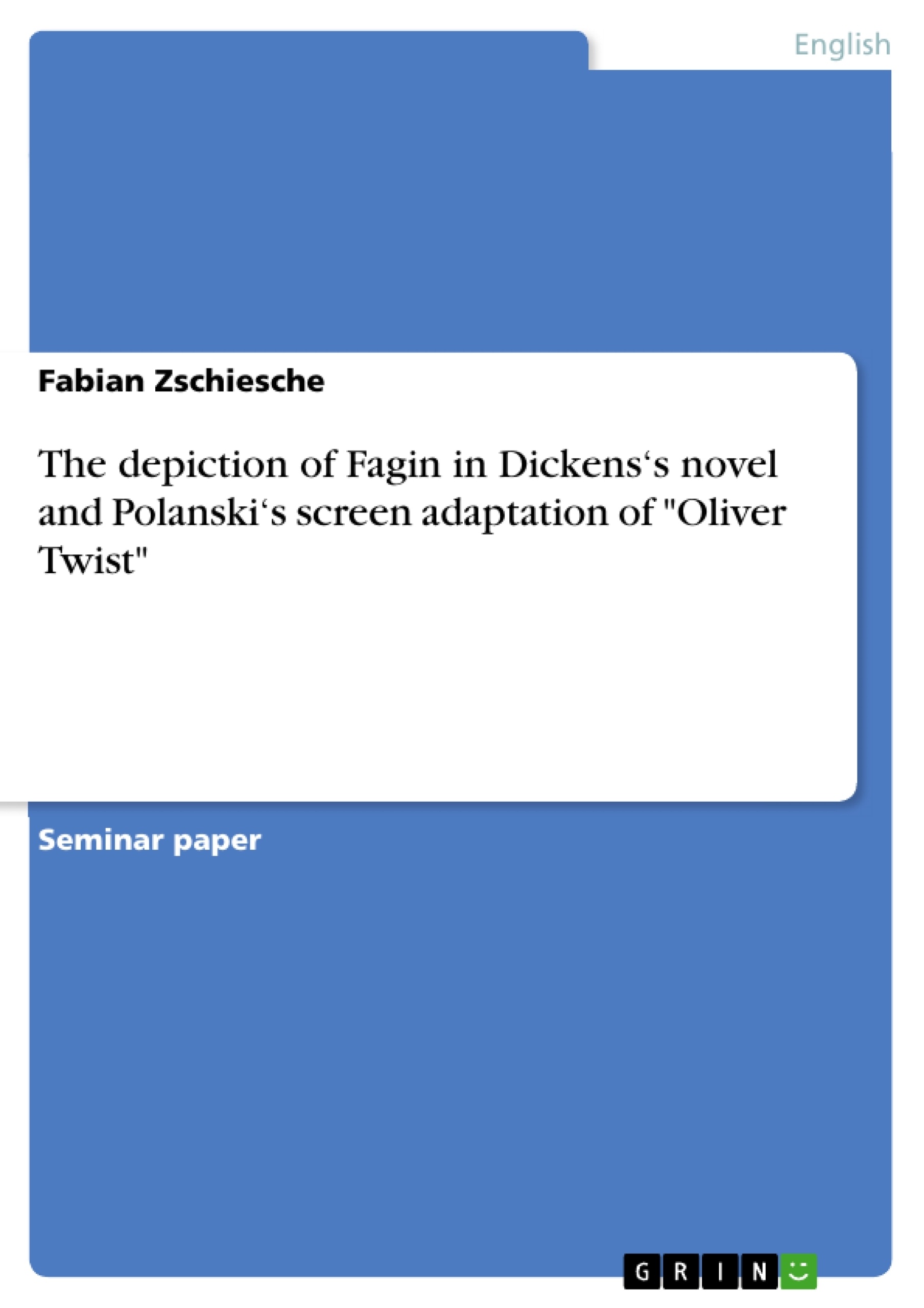"Who is Fagin?" is not only a question one might come across when reading Charles Dickens’s "Oliver Twist" or watching one of its screen adaptations. In fact, this question has so far concerned different literary critics all approaching various aspects from his role as the "Jew" (Paganoni, Steyn, Morse), over the question whether he is actually villainous or not, to debates concerning gender issues (Foley) and therefore asking if he fulfils either a maternal or paternal role for the children of his gang. Without a doubt there is probably no other character in Charles Dickens‘s novel that offers so many points of critique and or possible interpretations. Although the main plot of the story is about Oliver Twist, it is Fagin who‘s depiction in the novel and later on screen adaptations gets most of the attention by reviews and discussions.
Consequently in my term paper I will mainly deal with Fagin in Charles Dickens’s "Oliver Twist" and will focus on the way Fagin is depicted. Before going into detail on several very distinctive issues, I will analyse his behaviour, language and appearance in general throughout the novel. One of those distinctive issues is his special role for the children as he could be regarded not only as a villain figure but to a certain extent also as some caring paternal or maternal figure. Moreover the question about Fagin‘s depiction as the Jew will be taken care of in a very detailed way since this had been a extremely polarising issue throughout the ages.
Since several of those aspect also come up in Ben Kingsley’s interpretation of his role as Fagin in Roman Polanski’s film version of the novel, I will also analyse whether Polanski’s Fagin is a ‘realistic’ adaptation of the character Dickens portrays in his novel or whether Polanski and Kingsley create their own Fagin and to what extent Polanski‘s adaptation shows similarities with and differences to the novel. Nevertheless I will mainly focus on Dickens’s Fagin and his importance for the story of Oliver.
Table of contents
1. Introduction
2. The depiction of Charles Dickens‘s Fagin
2.1 Appearance, language and behaviour
2.2 Fagin and the conflict of gender roles
2.3 Fagin as a Jew - Race and prejudices
2.4 Fagin as a threat to the Anglo-Christian Victorian family values
3. Polanski‘s screen adaptation of Oliver Twist
3.1 Polanski‘s and Kingsley‘s interpretation of Fagin
3.2 Differences and similarities between the film and the novel
3.2.1 Similarities
3.2.2 Differences
4. Conclusion
5. Bibliography
5.1 Primary texts
5.2 Secondary texts
- Quote paper
- Fabian Zschiesche (Author), 2012, The depiction of Fagin in Dickens‘s novel and Polanski‘s screen adaptation of "Oliver Twist", Munich, GRIN Verlag, https://www.grin.com/document/368122
-

-

-

-
Upload your own papers! Earn money and win an iPhone X. -

-
Upload your own papers! Earn money and win an iPhone X. -

-
Upload your own papers! Earn money and win an iPhone X. -

-
Upload your own papers! Earn money and win an iPhone X. -

-
Upload your own papers! Earn money and win an iPhone X. -

-
Upload your own papers! Earn money and win an iPhone X.

